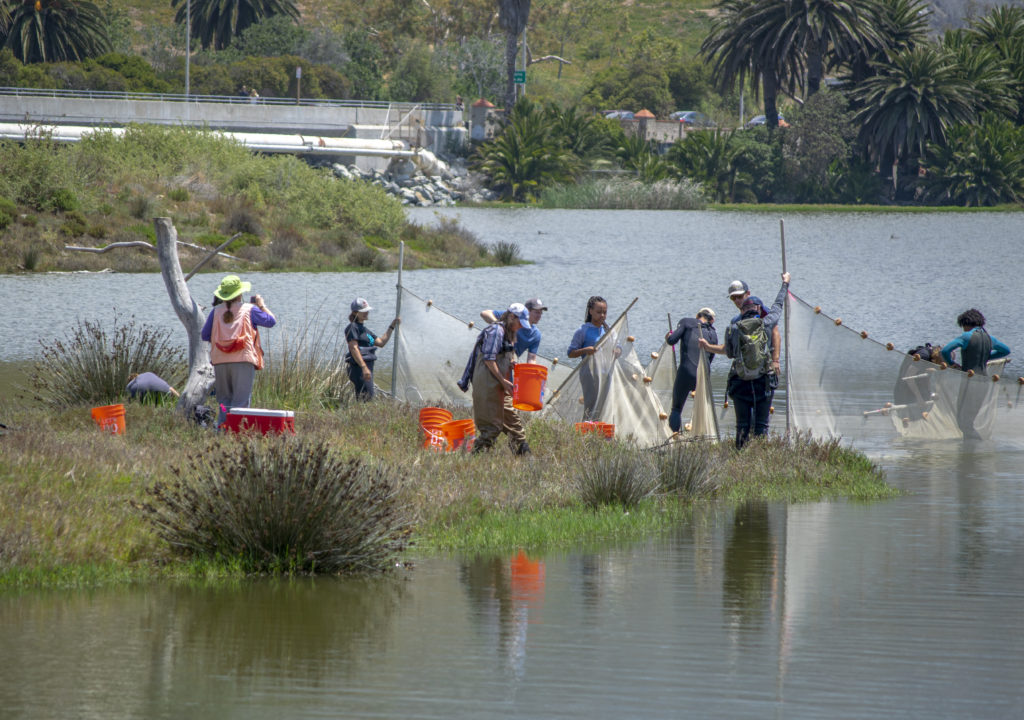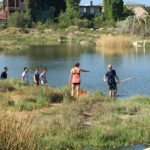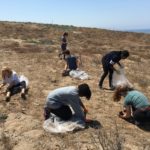
Scientists at Loyola Marymount University’s Coastal Research Institute are tackling some of today’s most vexing problems along the ocean’s coasts where two-thirds of the world’s population lives. Under the guidance of faculty from the LMU Frank R. Seaver College of Science and Engineering and working scientists from The Bay Foundation, 34 internship and research assistant students (including graduate students) from LMU are conducting research with the CRI this summer.
Some of the research projects include:
- Modeling coastal climate stressors and adaptation strategies, led by Jeremy Pal, graduate director and professor of civil engineering and environmental science
- Native plant microbe interaction research, led by Michelle Lum, associate professor of biology
- Eelgrass and seafood genetics research, led by Demian Willette, assistant professor of biology
- Marine invertebrate physiology research, led by Christina Vasquez, assistant professor of biology
- Intertidal microplastics research, led by James Landry, co-executive director of the CRI, who is also a chemistry and biochemistry professor
- Beach characterization studies, led by John Dorsey, professor of civil engineering and environmental science
- Habitat restoration and monitoring, led by TBF’s Melodie Grubbs, director of watershed programs, and Karina Johnston, science director
Launched in fall 2017, CRI is advancing understanding on a range of topics from water quality to healthy revitalization of coastal wildlife and vegetation to the dangers of microplastics and microfibers.
“Our partnership with The Bay Foundation gives faculty, staff and students the opportunity to get involved in applied research that focuses on the restoration of Santa Monica Bay,” said Landry, “The science will help inform how we go forward in solving some of these challenging problems.”
In summer 2018, among its many research projects, CRI investigated a global environmental problem facing the local urban coastal area. The research looked at how to measure microplastics and microfibers, as well as their prevalence in the sand on Santa Monica beaches.
The next step for CRI, Landry said, will be to look into whether microplastics and microfibers are getting into the food chain and, if so, what kind of damage it is doing to marine organisms. That work begins in summer 2019, and Landry hopes to have additional funding support for the project, as CRI submitted over $2 million in grant applications over the past year.
Undergraduate interns worked on all of CRI’s projects during the summer, including wetland research, water quality monitoring, dune restoration research and long-term monitoring using remote sensing data. Both funded and for-credit internships involve working 20 to 30 hours per week over six weeks under the mentorship of a faculty member with support by the Bay Foundation. Interns are required to produce a paper they present to LMU and Santa Monica Bay communities, and have publication opportunities.
Research assistant positions are also available for undergraduate and graduate students, and CRI conducts educational programs for students in local high schools. In the near future, CRI expects to provide opportunities for post-doctoral and other visiting scholars to study, research, and teach at LMU.
Faculty involvement in CRI is vital to the institute’s success. Faculty can get involved in a variety of ways, including: leading research projects, mentoring students, disseminating information to various audiences, developing curricula, and providing expert technical support.
CRI publishes a peer-reviewed journal called Urban Coast, contributes to the State of the Bay comprehensive assessment of the environmental condition of Santa Monica Bay and adjacent waters, and will co-host a symposium every five years to disseminate findings to a broad audience of stakeholders, municipalities, agencies, academics and organizations.
CRI works as a partnership between the Frank R. Seaver College of Science and Engineering and The Bay Foundation, a non-profit charged with restoring and enhancing the Santa Monica Bay and local coastal waters.








